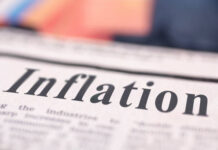Markets
US core bond yields recovered from what we consider an outsized market reaction to yesterday’s disappointing US weekly jobless claims. In a technical trading session stripped of any important data, US yields rise between 1.9 and 4.9 bps with the front underperforming, the Canadian payrolls (see below) only temporarily interrupting the move higher. German Bunds outperform US Treasuries though they did miss out partially on the core bond rally yesterday. Yields add 0.5-1.7 bps at the front while shedding 1.2-2.4 bps further out. Equity sentiment is fragile with the EuroStoxx50 shedding 0.2% after touching the upper bound of the downward sloping short-term trend channel. Wall Street opens with minor gains. The Norwegian crown on currency markets ends the week on a strong note following above-consensus inflation numbers (cf. infra). Its bigger brother, the SEK, could sure use some relief as well with EUR/SEK hovering near a 14-year low. Next week’s Swedish inflation numbers may perhaps do the (same) trick. The Canadian loonie forfeited earlier gains after the job numbers but manages to eke out a tiny gain still. Other majors including the US dollar and euro trade directionless. The Japanese yen is feeling some selling pressure. USD/JPY trades in the mid 139-area and EUR/JPY is testing the 150 barrier. Bloomberg cited officials as saying there’s little need to adjust the yield curve programme at the meeting next week. They recognize inflation is running stronger than expected but aren’t confident enough to say the 2% target is in sight. It does raise chances for some tweaks at the July meeting, when the BoJ is to deliver new quarterly forecasts. Other key events next week obviously include the ECB and Fed meeting. Both will bring updated projections. The former is sure to raise rates further, to strongly hint at another move in July while keeping a data-dependent approach for moves further out (including September). The Fed will probably skip hiking but we expect its updated dot plot to show higher policy rates than the current 5-5.25%. Reasons to do so include ongoing tightness on the labour market, economic resilience, an already bottoming out housing market and (core) inflation stalling at elevated levels. Regarding the latter, the Fed at day one of its two-day meeting gets the May CPI figure served.
News & Views
Consumer prices in Norway in May again printed substantially higher than expected. Headline inflation rose 0.5% M/M and 6.7% Y/Y (6.4% in April). Core CPI-ATE (adjusted for tax changes and ex. energy) jumped 0.7% M/M, raising the Y/Y measure to 6.7%, the highest on record. The rise was broad-based across sub-categories of the basket, with biggest monthly increases registered for food and non-alcoholic beverages (2.3%), clothing and footwear (2.1%), hotels and restaurants (0.9%) and health (0.5%). The May CPI also widely surpassed expectations of the Norges Bank (NB). In its latest monetary policy report (March) the NB saw May CPI-ATE inflation at 6.0%. Early May, the NB raised its policy rate by 25 bps to 3.25%. It flagged another step at the June meeting with according to the projections in the March report could be the cycle top (3.5%). However, NB in May already mentioned the risk that further tightening might be needed if, amongst others, the krone remains weak. Today’s data suggest that the policy rate might be raised to or even beyond 4%. The NB will published new forecasts at the June 22 meeting. The krone anticipates additional interest support rebounding from the EUR/NOK 11.76 area to 11.61 currently.
The May Canada Labour Market report was softer than expected. Net employment growth turned negative (-17.3K) to be compared with 41.4k jobs created in April. The decline was due to a loss in the services sector (-40.1k). Employment in goods producing sectors grew by 22.8k. It was the first negative job growth figure in 9 months. The number of unemployed rose by 34.8k. The unemployment rate rose from 5.0.% to 5.2%. The participation rate eased from 65.6% to 65.5%. Average hourly wage growth of permanent workers slowed to 5.1% from 5.2%. The softer data come in the wake of the Bank of Canada this week restarting its hiking cycle (+ 25 bps to 4.75%) on stronger than expected growth, a tight labour market and persist (core) price pressures. Canadian bonds outperform after the data with the 2-ycurrently ceding 4.0 bps. The report also slightly eased market expectations on further BoC rate hikes. However an additional 25 bps tightening is still discounted for the September meeting. The loonie is losing modest ground with CAD/USD rising from 1.332 to 1.335. This compared to a close of 1.3425 end last week.














